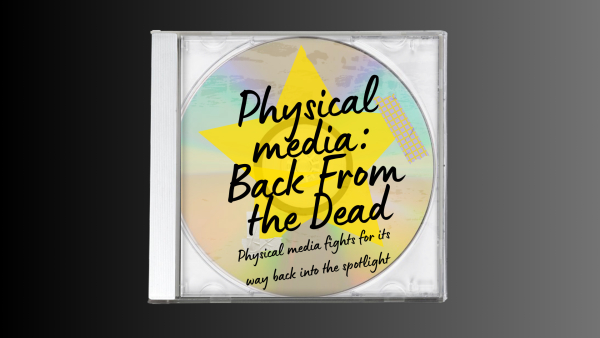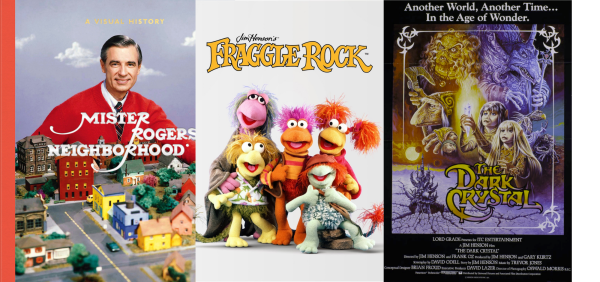Lit. of 2022: The Best and Worst Read This Year
Lit. of 2022: My best and worst
The end of the Goodreads 2022 Reading Challenge has come upon us, meaning it’s only right that I do a retrospective on all that I read. Unfortunately, I read 129 books, which means there simply is no time to do a blurb/look into every single book. However, after much deliberation and agonizing, I’ve been able to cut those 129 down to the five best, five worst, and four honorable mentions– roughly 10% of my total reading.
For the five best and worst books, there will be a plot summary, mini-review, and one-sentence review summary. The honorable mentions will also have a plot description and one-sentence review, but they will not have the expanded review– this is for the sake of time/energy.
Further, none of these books are ranked in any particular order, so numerical value does not indicate how I felt about it compared to others within the same category.
Lastly, I hope this list is useful to you for finding your next read.
The Bad:

- “Juliet Immortal” (Stacey Jay)
This is my penance for reading a retelling (in this case William Shakespeare’s “Romeo and Juliet”) without being convinced of the premise. In Jay’s version, Juliet and Romeo are not the quintessential forbidden lovers, but rather enemies. After their wedding, Romeo kills Juliet in an attempt to gain immortal life. However, Juliet’s pure heart allows her to join the ranks of the dead who seek to interfere in human affairs–ensuring lovers find one another. As Juliet begins the process of uniting a young couple in the modern century, her plans are repeatedly thwarted by Romeo’s evil interventions.
Juliet is an uncompelling protagonist and narrator, and lacks clear perspective. This muddiness is apparent in the way she interacts with Romeo and her current friends, as her feelings for them seem to alternate day-to-day. Compounding this is the excessive plot-dumping and stilted dialogue which don’t enhance the world so much as confuse the audience. Despite all the claims of world-ending stakes and the wide implications of the main characters’ actions, the ending is too neat and feels unearned by both the characters and the narrative.
1/10 would not resurrect Juliet again
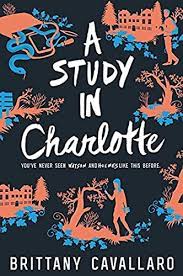 2. “A Study in Charlotte” (Brittany Cavallaro)
2. “A Study in Charlotte” (Brittany Cavallaro)
Another reinterpretation, Cavallaro’s “A Study in Charlotte” takes Arthur Conan Doyle’s “Sherlock Holmes” and transports it to a contemporary boarding school. There, Jamie Watson meets Charlotte Holmes, a teenage genius who has solved crime her entire life. When a well-known yet little-liked student is murdered, Jamie and Charlotte team up to uncover the truth and clear their names.
Cavallaro takes a unique approach to retelling by having Jamie and Charlotte serve as extensions of their respective families, rather than substitutes. Unfortunately, the hinted at backstory of the original Holmes and Watson is significantly more interesting than anything their descendants are doing. Jamie is an insufferable narrator in a way that hinders the narrative rather than adds moral complexity. His archetype is that of the rich playboy, but he’s significantly too young– being 16– to sell this in a convincing way. A similar thing happens to Charlotte where her personality is reduced to being smart, and the narrative is stopped to give her time to monologue about various deductions she’s made. It’s not inherently a bad choice, but Charlotte and Jamie together are self-centered and self-important, making it hard to root for them. On top of this, Cavallaro gives the perpetrator a reason that feels more morally reprehensible than morally gray.
1/10 would not listen to Charlotte deduce again
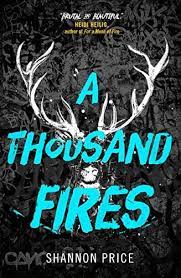
3. “A Thousand Fires” (Shannon Price)
“A Thousand Fires” is marketed as a combination of “The Iliad” by Homer and “The Outsiders” by S.E. Hinton. Set in contemporary San Francisco, Price’s novel follows Valerie Simons, who has recently turned 18. In her community, 18 is the age at which one of the local gangs (either the Herons, Boars, or Stags) recruits new members. Despite the warnings of those she loves, Valerie is determined to join the Herons in order to avenge her brother’s death at the hands of the Boars years prior. However, Valerie is recruited by the Stags, not the Herons. The further involved with the Stags Valerie becomes– especially with the leader, Jax– the further the line between good and bad blurs.
It’s hard to write believable power structures in which young adults are at the top. Hinton got around this problem by focusing on the lack of organization within the ranks of the Greasers in Socs– showing the only thing keeping the two gangs together is their dedication to the group, not their organization skills. Ralph Cormier got around this in his novel “The Chocolate War” by showing how adults took sides in teenaged conflict, leading to further imbalance amongst the kids themselves. “A Thousand Fires” does not attach itself to messiness, nor does it attach itself to the way these teenagers will grow into adults. The resulting story is a confused one in which the protagonist spends much of the story passive, and important action is either rushed through or happens off-page. As enticing a story as it is, the lack of the cohesion gives it a disjointed and underdeveloped feel.
3/10 would avoid all animal-themed groups again
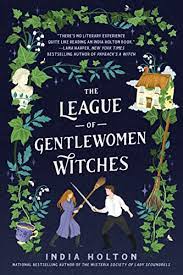
4. “The League of Gentlewomen Witches” (India Holton)
The second book in Holton’s “Dangerous Damsels” series, “The League of Gentlewomen Witches” follows Charlotte Pettifer– a witch– who is seeking an ancient and important artifact. In her pursuit of this item, she encounters Alex O’Riley– a pirate also attempting to find the treasure. The two realize they must work together if they want to find the artifact first, and begrudgingly pair-up. However, the further into the search they get, the more strain is put on the lives they left behind, and the more they begin to look towards the future.
Petty as it is, my only real complaint with the story is the writing style. I don’t know what other word to use for the writing except for ‘quirky,’ which doesn’t fully convey the tone of the work. Holton writes her story as though the omniscient narrator is speaking directly to the audience, almost as if the pair are confidants. In some settings, this style is charming and gives the reader insight into the characters in a way that doesn’t feel didactic. However, in this context, the writing feels like a lip-service to Charlotte, who is always remarked upon as being incredibly clever, beautiful, and witty. All of these characteristics could have been implied based off of how Charlotte interacts with those around her, or based off of how those around her withhold compliments. Instead, the narrative chooses to tell, not show, and sacrifices the progression of the plot for the idolization of Charlotte.
3/10 would not go on a witchy treasure hunt again

5. “Witches of East End” (Melissa de la Cruz)
The first book in de la Cruz’s “The Beauchamp Family,” “Witches of East End” is about three Beauchamp women as they attempt to navigate their magic and the world around them. Matriarch Joanna feels dangers lurking in the future for her daughters Freya and Ingrid, and when strange things begin to happen around East End, the Beauchamp women quickly find themselves as the scapegoat for their community. In a bid to restore their reputations and save the place they love, the three work together to find out the cause of the disturbances and to bring peace back.
The primary sin of the book is its inability to be consistent in the stakes. Initially, the conflict appears to be highly localized– it’s about a small town reconciling with difference– however, the more magical elements are introduced into the book, the more life-or-death the tension becomes. Suddenly, it’s no longer about the Beauchamp family attempting to stay together, it’s about the Beauchamps harnessing large amounts of magic to banish evil from East End. The narration itself appears somewhat confused about what exactly it should care about, often focusing on overdrawn character melodrama over the primary conflict of the story.
3/10 will not join the Beauchamp family again
The Honorable Mentions:
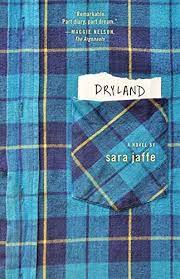
- “Dryland” (Sara Jaffe)
Set in Portland during the HIV/AIDS crisis, “Dryland” follows 15-year-old Julie through a year of school after she joins the swim team. Not deeply interested in swimming herself, Julie joins as an escape from her increasingly tense home-life (and the unspoken fact of her brother’s estrangement), a way to get closer to swim team-member Alexis, and a way to get to know herself.
9/10 would jump into this book again
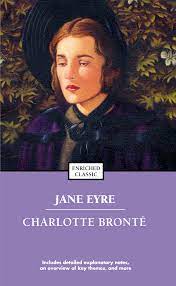
2. “Jane Eyre” (Charlotte Brontë)
Perhaps the ultimate Gothic novel, “Jane Eyre” is a flowing, atmospheric read. At its center is Jane Eyre, a young woman seeking to gain independence through employment. Orphaned at a young age and raised by neglectful family members, Jane views herself as being her only salvation. When she is hired to be a governess at Thornfield Hall, Jane finds herself surrounded with opportunities she has never had before: whether it be the love of her ward, Adele, or the understanding she feels with her employer, Mr.Rochester. However, all is not as it seems and Jane must confront the darkness of her life in order to have a future.
9/10 would return to Thornfield Hall again
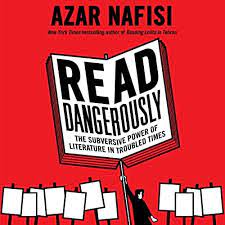
3. “Read Dangerously” (Aziz Nafisi)
Written as a series of letters to her recently deceased father, “Read Dangerously” keeps record of politics across the world– especially the U.S. and Iran– and the power of literature to confront difficult subjects. Processing both grief and her current life, Nafisi weaves together a story of her life and the world as she views it now. It’s deeply personal– and deeply insightful.
9/10 would collect the letters again
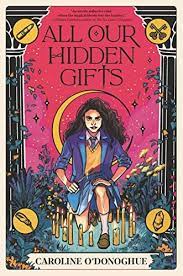
4. “All Our Hidden Gifts” (Caroline O’Donoghue)
Set in a contemporary Irish town, “All Our Hidden Gifts” tracks Maeve’s life after a fallout with her best friend, Lily, and her struggling relationship with school. When Maeve finds tarot cards, and Lily disappears shortly after, Maeve finds herself being drawn further into magic as a way to save her ex-friend and community from the increasing encroachment of religious fanatics. Along the way, she must reach out to those around her and lean into her innate gifts.
9/10 would listen to the tarot readings again
The Best:
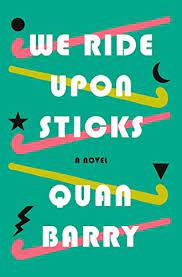
- “We Ride Upon Sticks” (Quan Barry)
The witch-centric origins of Massachusetts are re-examined in this novel. Set in the 1980s, “We Ride Upon Sticks” chronicles a season of the Danvers, MA, field hockey team after they cast a spell to bring success. Over the course of the year, friendships change, new tensions arise, and the team finds their relationship to themselves, each other, and the surrounding world to be permanently altered.
In the simplest terms, this book is incredible– maybe even life-changing. Barry writes her characters with nuance and understanding, ensuring each member of this ensemble cast is able to shine and show personality. In doing this, Barry crafts intricate and detailed relationships between each of the characters, exploring a range of human connections and the way in which they change over time. It’s deeply satisfying, emotionally cathartic, and a complex examination of the way race, class, and gender all intersect and influence friendships. The best part, however, is the room Barry gives her characters to self-actualize. “We Ride Upon Sticks” never kids the audience that this field hockey team never experiences difficulty as adults, but it does promise the audience that what the characters’ experience in the book has influenced and changed them into more adept, compassionate people. Barry seamlessly blends this journey with flirtations of magic– forcing the audience to consider the power of self, and the power of belief.
10/10 would want to join a witchy team again

2. “All the President’s Men” (Carl Bernstein and Bob Woodward)
In the wake of the break-in at the Watergate Hotel, Washington Post journalist Bob Woodward was sent to cover the trial of the burglars. The strange proceedings of the case led to further investigation by Woodward, who teamed up with more-experienced staff writer Carl Bernstein to look into the break-in. Little did the public know this trial would lead to the biggest feat of journalism, and one of the most in-depth investigative reports ever published.
Suffice to say, “All the President’s Men” is written incredibly well. The primary achievement of the book is its ability to detail both the excitement of the investigation with the widespread dread of what was being uncovered. As Woodward and Bernstein share, the stakes continued to rise as the investigation went on and more powerful men were attached to the crime. Additionally, they share, there’s something worrisome about the level of corruption that exists within systems of power. The non-fiction novel brilliantly describes the social climate surrounding the investigation, especially the way power-dynamics form within high-level places. The book is a tribute to the way people can hold those in-charge accountable, and a reminder that corruption is a pervasive, but stoppable power. The book is at once infuriating and inspiring, worthy of its place in history and its place in the present.
10/10 would go to the courtroom again
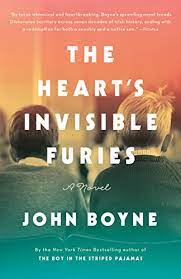
3. “The Heart’s Invisible Furies” (John Boyne)
At once a personal and national history, Boyne’s novel follows the complete life of protagonist Cyril Avery against the backdrop of nearly a century of Irish history. Here, Boyne illustrates the way a country impacts character, and shows the difficulty of realizing oneself in an environment of tumult, as well as exposing the casual bigotry across the world. However, focus never shifts from Cyril as he grows from a shy and unassuming boy to a man who is able to embrace himself and reconcile with the larger world.
Boyne understands that making a character likable is not the same thing as making a character redeemable. Cyril spends a large amount of the novel messing up, hurting himself, and allowing his indecision to hurt those around him. Yet despite this, Cyril remains perpetually compelling and sympathetic. It’s impossible to read and not root for him as he discovers his passions, recognizes his sexuality, and begins to invest in himself and his future. Equal parts saddening and hopeful, “The Heart’s Invisible Furies” attaches to the heartstrings immediately and doesn’t let up at the end of the novel, or even after the final page has turned. It’s an odyssey of epic writing proportions, and a testament to the ever-constant change of humanity.
10/10 would wait for Cyril to decide again
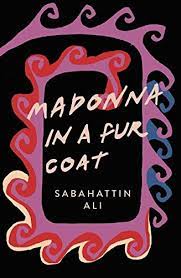
4. “Madonna in a Fur Coat (Sabahattin Ali)
Initially published in the 1940s, “Madonna in a Fur Coat” utilizes the framing device of a story within a story. An unnamed narrator attends his friend Raif on his deathbed. Raif requests the narrator read a diary of his, one that details his life as a young man. Within the pages, the narrator finds the story of a young Raif who left Turkey to visit Germany for a while, and while there, met a young painter named Maria. The two become fast friends, defying societal expectations together while attempting to become the people they’ve always envisioned being.
Ali ties the themes of identity to country and change seamlessly within the novel. It is a multi-layered story that reveals many morals. First, it is the story of a man leaving his home and family behind to explore new opportunities. Then, it is the story of cultural change, and how one is influenced by what is around them. Then, it is a story of returning, and the way internal change is not synonymous with external change. Taken together, it’s a multi-layered look into people’s ability to change, and their desire to grow.
10/10 would deal with personal uncertainty again

5. “War and Peace (Leo Tolstoy)
The longest novel on this list, “War and Peace” is a story of epic proportions. Taking place during the French-Russo war, the book follows an ensemble cast as they individually grapple with the conflict around them and their place in the world. While war factors heavily into the setting, the primary focus is the toll war takes on human life and happiness, and the long-lasting effects of any conflict.
The true feat of Tolstoy’s work is his ability to seamlessly balance large casts of characters. Here, the interlocking stories of various people serve to highlight different aspects of the same experience. This choice allows the audience greater insight into both the characters and the situation surrounding them, as well as making the novel more compelling by allowing people to see different aspects of themselves reflected in the novel. There’s a clear understanding by the author of each of the characters, and it allows Tolstoy to give each person their own arc and growth throughout the story. This is not a novel of stagnation, but rather, one of constant change. Several of the characters, like Pierre, find themselves changing day-to-day. “War and Peace” does not shy away from the tumult, but rather leans into it, allowing equal influence from people and situation.
10/10 would keep track of everyone’s name again


